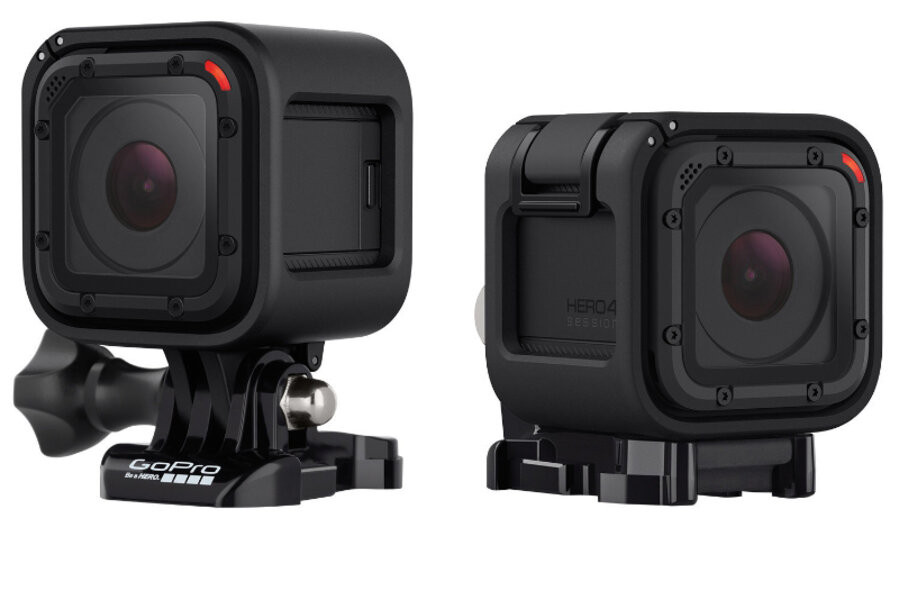Hero4 Session: How small can the GoPro go?
Loading...
What’s tiny, cubed, and can shoot video up to 1080p at 60 frames per second?
GoPro’s new Hero4 Session camera, that’s what.
The latest member of the GoPro family, the Session has been hailed by some tech pundits as a marvel in redesign that stays true, for the most part, to the company’s pledge to build “the world’s most versatile cameras.”
“It’s not just a pretty new face,” TechCrunch’s Matt Burns wrote. “This camera is a significant step forward for GoPro.”
The most evident change is in size: At about 2.6 ounces and 1.5 inches all around, the Session is 50 percent smaller and 40 percent lighter than a Hero4 Black, GoPro’s top-of-the-line camera. Despite that, the Session is waterproof out of the box and submersible up to 33 feet without an additional case, Engadget’s James Trew noted.
The camera’s new dimensions allow it to go pretty much where no other GoPro can, while making it more manageable all around.
“I went swimming with it strapped on my back, and then on my chest,” tech writer Brent Rose wrote for Wired. “Normally there’s so much drag on your standard GoPro that it bounces around on you, slowing you down and ruining your shot, but not with the Session. I could barely feel it, and the imagery turned out nice and smooth.”
It’s also simple to use: A main power button doubles as a record button, while another controls the Session’s Wi-Fi setting, Sean O’Kane wrote for The Verge, who took the camera with him on a white water rafting trip in Colorado.
The design helps with battery life, he noted, an issue that GoPro has struggled with on its other products. “When I started the hour-and-a-half rafting trip, the Session had two-thirds of its battery life remaining,” Mr. O’Kane wrote. “[B]y the end, it had outlasted a fully charged Hero4 Black and Hero+ LCD.”
Another innovation is a dual microphone setup that prevents the camera from picking up too much ambient noise or becoming too muffled, Endgadget's Mr. Trew wrote.
The Session also shoots 1440p video at 30 frames per second, 720p up to 100 frames per second, and, as mentioned earlier, 1080p at 60 frames per second. As for photos, it can shoot in 8-megapixel wide angle, or 5-megapixel medium, and comes with time lapse and burst modes.
That’s not a bad list of features for a camera its size, Trew noted, but it’s far from exhaustive.
The Session, for instance, can’t record in the ultra-high definition and high-speed captures modes that other GoPro cameras feature – an absence that a variety of reviewers took issue with.
“[T]his step backwards in video quality feels lackluster,” Mr. Burns wrote for TechCrunch. “At $400 the Session is not cheap. It lives in the higher-end of GoPro’s range, and therefore should have similar video recording capabilities.”
“Even though the Session’s video quality is good enough, for $400, I want it to be better than good enough,” he added.
Still, “there’s a lot to love about the size and simplicity of the Session,” O’Kane noted. “It fits in so many more places, the battery will last longer than any other GoPro ... and if you’re not obsessive about frame rates and resolutions you’ll probably be just fine.”
And that seems to be just want GoPro is going for.
“I think this is going to expand our customer base,” company CEO Nick Woodman told The Verge. “I think a lot of people still scratch their head when they look at our cameras.”








